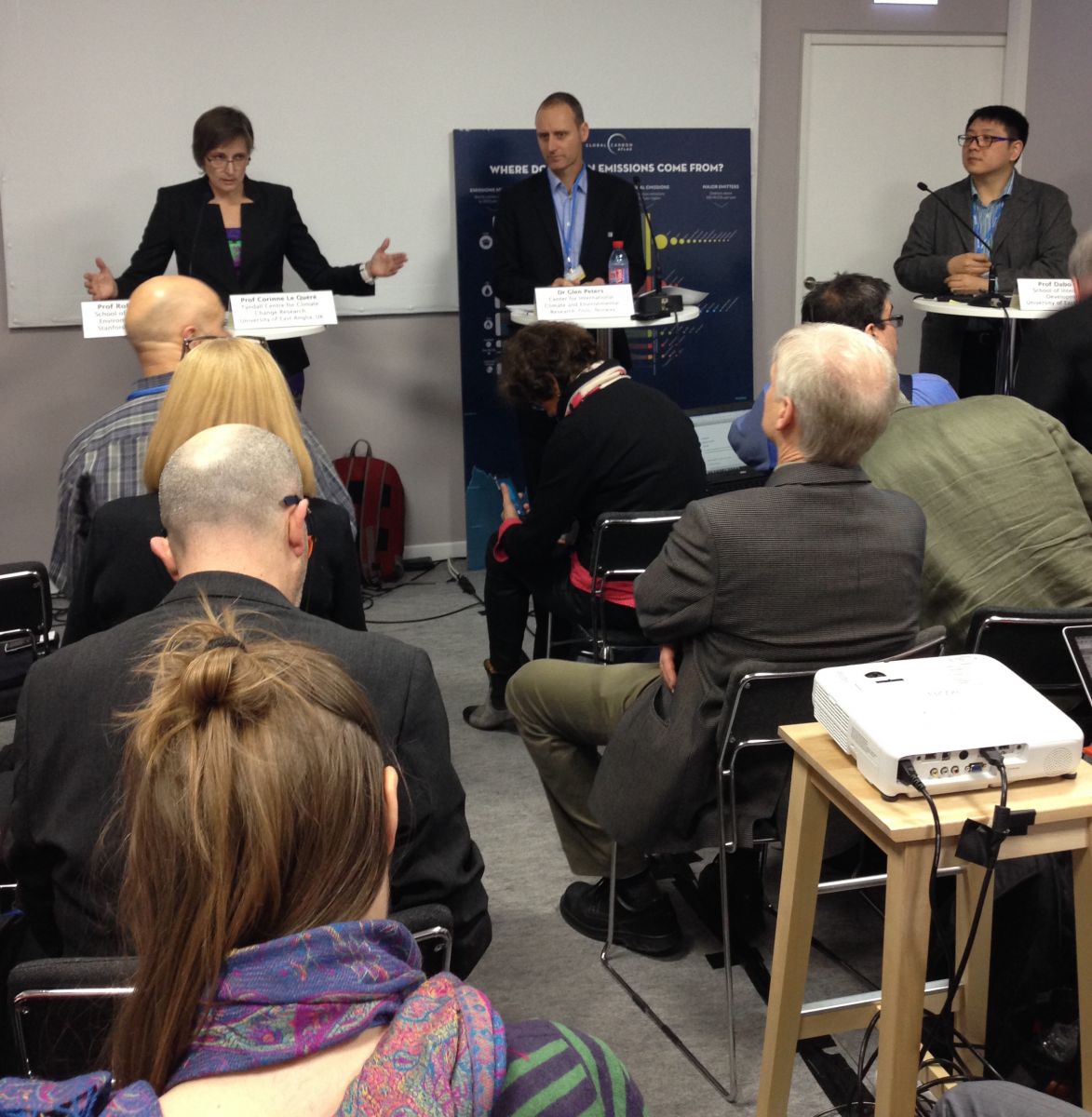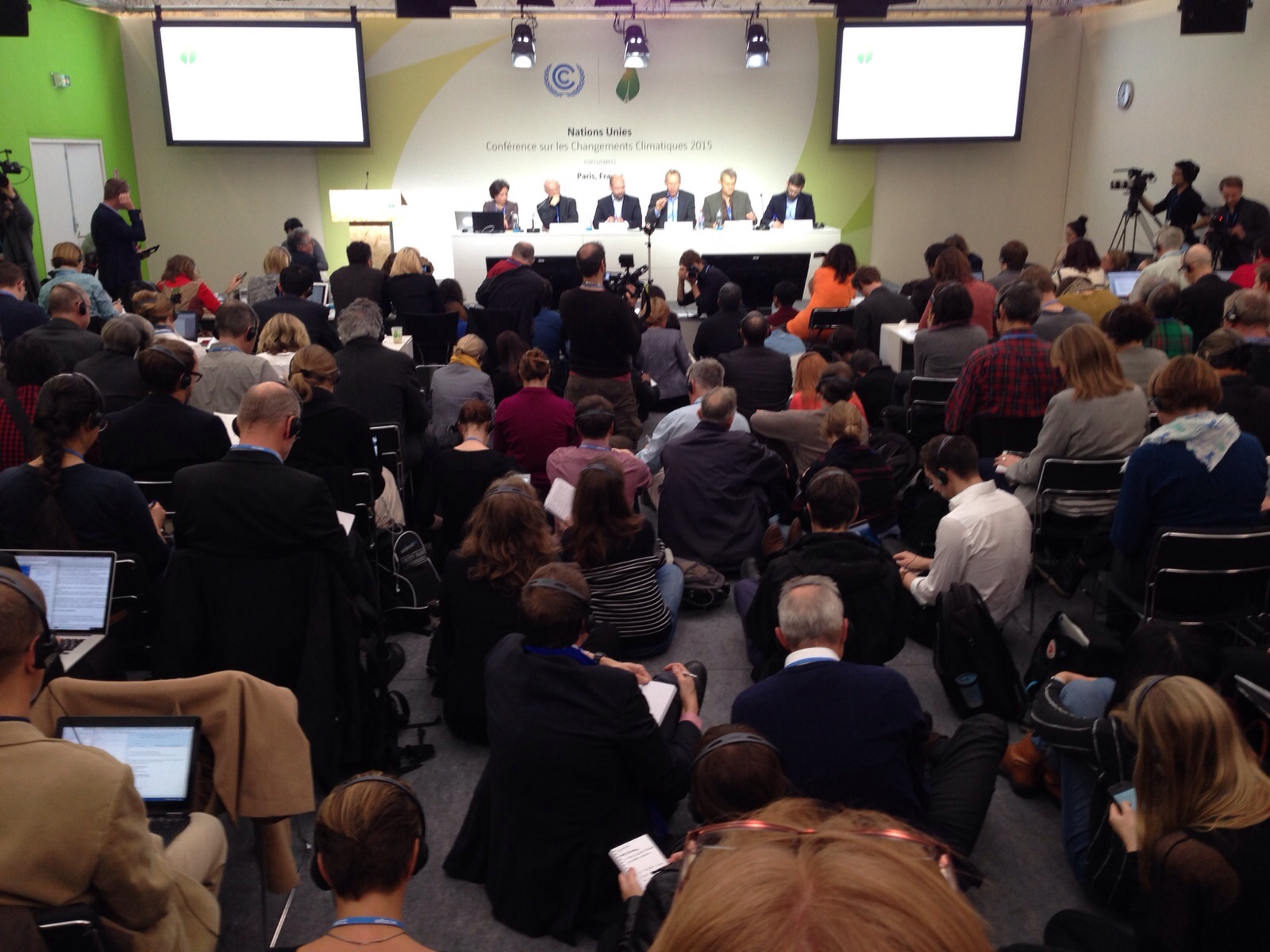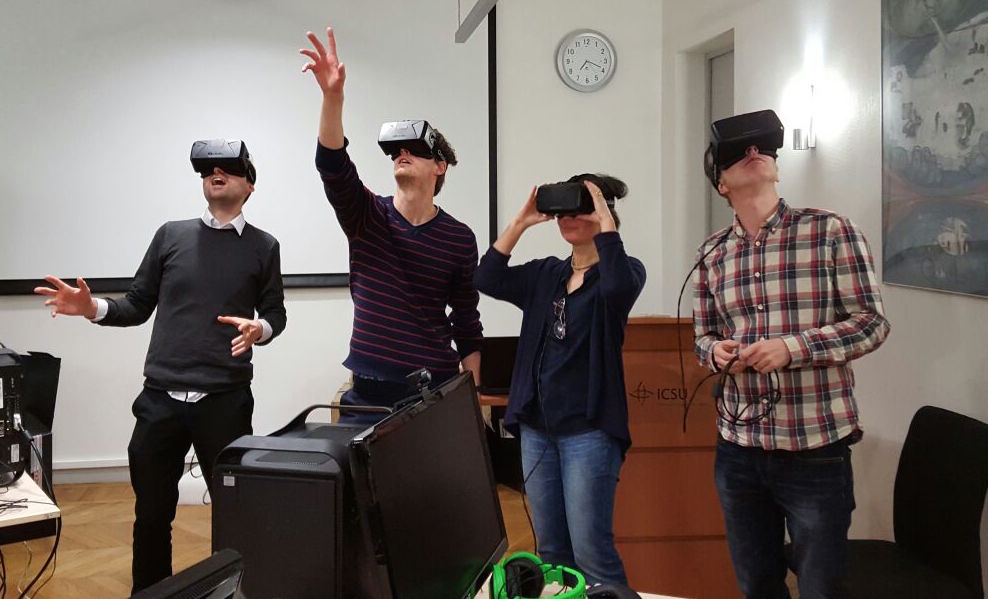A historic summit with reservations: Reflections on COP21
The Paris climate summit was historic. It resulted in an agreement more ambitious than many in the scientific community had anticipated: to hold “the increase in the global average temperature to well below 2°C above pre-industrial levels and to pursue efforts to limit the temperature increase to 1.5°C above pre-industrial levels.”
Scientists in Paris welcomed the final agreement but warned that the gap between ambition and reality is huge – not least because the national emissions commitments submitted in advance of the summit fall far short of the 2°C guardrail. In the coming months the research community will be providing deep analysis of the agreement and in the coming years assessing solutions-focused feasible pathways towards the goal.
Paragraph 21 of the agreement invites “the Intergovernmental Panel on Climate Change (IPCC) to provide a special report in 2018 on the impacts of global warming of 1.5 °C above pre-industrial levels and related global greenhouse gas emission pathways.” IPCC assesses science rather than conducts new research. As an indication of how surprising the 1.5°C target is, some argue there is little research yet done to assess; more effort is urgently required.
Launch of the Global Carbon Budget
During the summit, the Global Carbon Project, sponsored by Future Earth, published the Global Carbon Budget – the 10th such budget from the group (see also Future Earth’s Blog Post about it). The budget was launched with a press conference at the main summit site, Le Bourget, on 7 December and a policy side event the following day, chaired by Future Earth Science Committee member Youba Sokona.
The budget unexpectedly showed the rate of global carbon emissions grew just 0.6% in 2014 and the growth rate is predicted to fall slightly in 2015 (-0.6%) even though the global economy grew. This news, brought about by China’s action to reduce coal use and to increase investment more broadly in renewable energy, provided a note of optimism and was widely reported in the media (international newspapers like Washington Post, Guardian, Suddeutsche Zeitung, China Post, as well as the scientific journal Nature).
Lead author Corinne Le Quéré, director of the UK’s Tyndall Centre for Climate Change Research and Committee Member of Future Earth and colleagues warned, however, that they did not expect this trend to continue and, of course, the world is long way from peak emissions. The Future Earth Media Lab produced a website, an infographic and a two-minute animation for the 2015 Carbon Budget.
 Corinne Le Quéré, Glen Peters and Dabo Gaun from the Global Carbon Project at the 2015 Global Carbon Budget press conference. Photo: Future Earth
Corinne Le Quéré, Glen Peters and Dabo Gaun from the Global Carbon Project at the 2015 Global Carbon Budget press conference. Photo: Future Earth
On 5 December, the major climate “Action Day” event was opened with a keynote speech by Johan Rockström, director of the Stockholm Resilience Centre, to 1200 delegates including France’s minister for Ecology, Sustainable Development and Energy, Ségolène Royal, as well as American politician and environmentalist Al Gore.
On 11 December, Future Earth director Paul Shrivastava and Corinne Le Quéré spoke at the Healthy Lives on a Healthy Planet event organized by the Lancet, World Health Organisation (WHO), the Rockefeller Foundation and others. The event was a follow up on the recent report from the Lancet and Rockefeller’s Planetary Health Commission.
A bumpy road towards the agreement
Elsewhere in Le Bourget on the 11th, drama was unfolding as the penultimate draft text of the agreement was released. By Wednesday 9 December the draft agreement was progressing well, consensus had been found on many outstanding issues though several “brackets” remained – where negotiators were in dispute over part of the text. Some of the options still on the table seemed well aligned with the science of reaching 2°C, including the aim of 70-to-95 percent reduction in emissions by 2050.
However, the next draft, which appeared on 10 December, had removed much of this language. Worse, aviation and shipping emissions had dropped from the text – emissions from these sectors are equivalent to the combined emissions of the United Kingdom and Germany. And phrases such as “net zero greenhouse gas emissions” after 2050 had been replaced with new jargon relating to “greenhouse gas emissions neutrality”.
A spontaneous press conference that shaped the media narrative
The new text was such a significant departure from the previous that a group of scientists and science communicators organized a major press conference at the summit on Friday 11th at 12:00, under the auspices of Future Earth, the International Council for Science (ICSU) and the Earth League (which had published the Earth Statement in advance of the summit).
The press conference drew about 200 journalists from the world’s leading media. The atmosphere in the room was electric. Kevin Anderson, deputy director of the Tyndall Centre for Climate Change Research, stated the text was not “consistent with the science”.
 Participants of the press conference had to make do with the floor due to unexpectedly large numbers. Photo: Future Earth
Participants of the press conference had to make do with the floor due to unexpectedly large numbers. Photo: Future Earth
As the Washington Post reported, Steffen Kallbekken, research director for the Climate Economics Unit at the University of Oslo said, “The frustration as a scientist at this point is that once you set that global planetary guardrail, everything else must be consistent with that target. (…) It means reaching…70-to-95 percent reduction in emissions by 2050 as an absolute minimum, and it actually means being careful with statements like ‘greenhouse gas neutrality”
The event generated headlines in the Washington Post, Reuters, New York Times, New Scientist, the Wall Street Journal, BBC and elsewhere.
The press conference contributed to shaping the media narrative of the summit. Subsequent reporting on the historic nature of the agreement was tempered by the scientific reality of the gap between aspiration and commitments on the table.
Press conference speakers:
- Kevin Anderson (Tyndall Centre for Climate Research)
- Steffen Kallbekken (CICERO)
- Johan Rockström (Stockholm Resilience Centre)
- Joeri Rogelj (IIASA)
- Hans Joachim Schellnhuber (Potsdam Institute PIK)
- Denise Young (Moderator) (ICSU)
The final agreement, published on Saturday 12 December, improved somewhat on the penultimate draft (find key media links from the press conference in the info box).
Future Earth's involvement in COP21
Future Earth researchers were involved in dozens of events during COP21. Moreover, Future Earth provided an essential role in support of the science community attending the Paris climate summit. With our partners the International Council for Science (ICSU), Stockholm Resilience Centre (SRC) and the International Social Science Council (ISSC), we managed a joint booth for the duration of the conference with a giant touch screen provided by SRC. This collaborative effort provided a daily news bulletin (led by ICSU’s Johannes Mengel and Nora Papp), and ran side events with partners, e.g. on the outcomes of the ‘Our Common Future Under Climate Change’ conference.

Organisers of the Anthronaut Experience Virtual Reality hackathon: Yoni Dayan, Johannes Mengel, Denise Young, Owen Gaffney. Photo: Future Earth
In addition, Future Earth organized a Virtual Reality hackathon with ICSU on 5 December, which attracted some of France’s leading filmmakers and developers in the Virtual Reality space. The one-day hack brought together scientists, journalists, filmmakers and developers to brainstorm ways Virtual Reality could be used to explore concepts such as the Anthropcoene, and global issues like climate and biodiversity loss.
Furthermore, Future Earth’s Owen Gaffney, Thorsten Kiefer and Erik Pihl spoke at several events organized by the Earth Journalism Network – an international network of hundreds of journalists reporting on global change and involved in data journalism, which is run by James Fahn from the Future Earth Engagement Committee.
DATE
January 6, 2016AUTHOR
Owen GaffneySHARE WITH YOUR NETWORK
RELATED POSTS
Spotlight on LMICs – Tired of Breathing in Pollutants? Time for Better Fuel Economy and Vehicle Standards
Future Earth Taipei Holds 2024 Annual Symposium
Spotlight on LMICs – The Future’s Juggernaut: Positioning Research as Anchors for Environmental Health